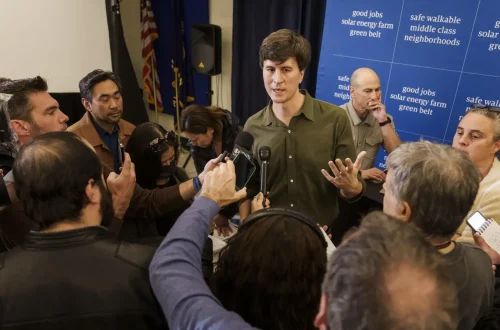
How scientists traced a mysterious covid case back to six toilets
I have a mystery to tell you about this week. It’s the story of how a team of researchers tracked a new coronavirus variant in Wisconsin from a sewage treatment plant to six restrooms at a company. But it’s also a story about the privacy issues that arise when you use sewers to track down the source of a rare virus.
The virus may have come from an employee who happened to be discharging a large number of very strange variants. Researchers are desperate to find that person. But what if that person doesn’t want to be found?
A few years ago, Marc Johnson, a virologist at the University of Missouri, became obsessed with the strange new coronavirus variants he was seeing in wastewater samples. The ones that caught his attention were strange in a couple different ways: they didn’t match any of the common variants, and they weren’t circulating. They would suddenly appear in one place, last for a while, and then often disappear – just in a flash. Johnson found his first flash in Missouri. “It drove me crazy,” he said. “I was like, ‘What the hell is going on?’

Then he worked with colleagues in New York, and they found a few more.
To identify more pedigrees, Johnson took to Twitter (now X) to call out wastewater treatment. in January 2022, he was hit again with a sample of wastewater shipped from a treatment plant in Wisconsin. Johnson says he and David O’Connor, a virologist at the University of Wisconsin, began working with state health officials to track down signals-from treatment plants to pumping stations to the outskirts of the city, the “One manhole at a time,” he says. “Whenever there was a branch on the road, we checked to see which branch [the signal] was coming from.”
They followed up on some suspicious leads. The researchers suspected the virus might have come from an animal. At one point, O’Connor took people from his lab to a dog park and asked dog owners for fecal samples. “There were too many red herrings,” Johnson says.
Finally, after sampling about 50 manholes, the researchers found the manhole, the last one on the branch with the mutation. They got lucky. “The only source was this company,” Johnson said. Their findings were published in March in the journal The Lancet Microbiology.
Wastewater monitoring may seem like a relatively new phenomenon, stemming from pandemics, but it goes back decades. A team of Canadian researchers outlined several historical examples in this story. In one example, a public health official traced the 1946 typhoid epidemic to the wife of a man who sold ice cream on the beach. Even so, the researchers expressed some hesitation. The study did not name the wife or the town, and he warned that “unless there is an outbreak,” the infection probably should not be traced to an individual.
In a similar study published in 1959, scientists traced another typhoid epidemic to a woman who was then banned from food service and eventually convinced to have her gallbladder removed to eliminate the infection. Such publicity can have “devastating effects on carriers,” they commented when writing about the case. “She went from being a quiet and respectable citizen to a social pariah.”
Things got tricky when Johnson and O’Connor traced the virus to the last manhole. Until then, researchers had suspected that the mysterious genealogies came from animals. Johnson even came up with a theory involving organic fertilizer from a more upstream source. Now, all they have left is a building that houses a company with about 30 employees. They don’t want to stigmatize anyone or invade their privacy. But someone at the company is releasing a massive virus. “Is it ethical not to tell them when the time comes?” Johnson wondered.
O’Connor and Johnson have worked with state health officials from the beginning. They thought the best path forward was to contact the company, explain the situation and ask if they could offer voluntary testing. That decision wasn’t easy. “We didn’t want to cause a panic and say there’s a dangerous new variant lurking in our community,” Ryan Westergaard, an infectious disease epidemiologist with the Wisconsin Department of Health Services, told Nature. But they also want to try to help people who are infected.
The company agreed to be tested, and 19 of its 30 employees received nasal swabs. They were all negative.
This could mean that one of the people not tested was carrying the infection. Or could it mean that a large number of new coronavirus infections in the gut didn’t show up on the nasal swabs? “If we did this via e-mail, I would use the shrug emoticon here,” O’Connor said.
At the time, the researchers had the ability to test for the virus in fecal samples, but they didn’t get approval. Now that they do, they hope the feces will lead them to a person infected with one of these strange viruses who can help answer some of their questions. Johnson has found about 50 variants of this mysterious new coronavirus in the wastewater. “The more I study these lineages, the more I’m convinced they replicate in the gastrointestinal tract,” Johnson said. “I wouldn’t be surprised if this is the only place they replicate.”
But how far should they travel to find these people? That remains an open question. O’Connor can imagine the dizzying array of questions that could arise if they do find an individual shedding one of these rare mutations. The most plausible hypothesis is that the spectrum appears in individuals with immune disorders, making it difficult for them to eliminate the infection. This raises a whole host of other thorny questions: what if the person has a compromised immune system due to HIV in addition to the strange new coronavirus variant? What if that person doesn’t know they’re HIV-positive or doesn’t want to disclose their HIV status? What if the researcher tells them about the infection, but the person can’t get treatment? “If you imagine what the worst-case scenarios are, they’re pretty bad,” O’Connor said.
On the other hand, O’Connor said, they think there are a lot of them across the country and around the world. He asked, “Isn’t there still a moral obligation to try to learn what we can so we can try to help people who are carrying these viruses?” He asked.




